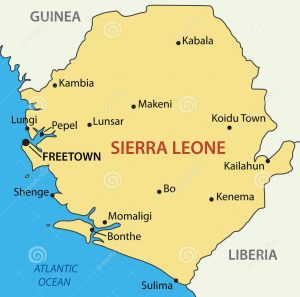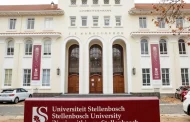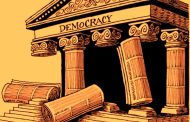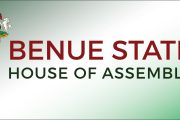By Yusuf Bangura, (PhD)
The provisional results of the 2021 Mid-Term census recently released by Statistics -Sierra Leone have raised eyebrows among Sierra Leoneans. According to the results summary, our population has increased by only 449,528-–from 7,092,113 to 7,541,641 between 2015 and 2021.
There have been massive population increases in some districts, especially those in the East and South, the strongholds of the ruling party; and population declines in Western Urban or the municipality of Freetown, as well as Bombali, Koinadugu and Port Loko districts in the North where the main opposition party draws its electoral strength.
 Government advocates have long argued that the 2015 census undercounted people in the South and East and overcounted those in the North and Western Area, and have called for a new census that they believe will be credible. The 2015 census was conducted under the administration of the current opposition party, the All People’s Congress (APC). The victory of the Sierra Leone People’s Party (SLPP) in the 2018 elections provided an opportunity, in their view, to set the record straight.
Government advocates have long argued that the 2015 census undercounted people in the South and East and overcounted those in the North and Western Area, and have called for a new census that they believe will be credible. The 2015 census was conducted under the administration of the current opposition party, the All People’s Congress (APC). The victory of the Sierra Leone People’s Party (SLPP) in the 2018 elections provided an opportunity, in their view, to set the record straight.
In highly polarised polities the world over, census data is always contested as it is used by governments to allocate resources and parliamentary constituencies. An examination of the results for the 2004 census, which was conducted under an SLPP administration, and the 2015 and 2021 censuses (conducted by APC and SLPP administrations respectively) reveals a very troubling trend and casts doubt on the veracity of the 2021 results.
In 2004, our first post-war census, the North and Western Area accounted for 54.28 percent of the population, and the South and East 45.72 percent. The North and Western Area’s share of the population increased in the 2015 census to 56.2%, and the share of the South and East dropped to 43.8%. I characterised this ethno-regional demographic distribution and the electoral outcomes it generated as *lopsided bipolarity* in one of my papers on Sierra Leone’s elections.
Surprisingly, the 2021 census results have not only overturned the 56.2:43.8 ratio in 2015 between the North-Western Area and South-East, but has gone further to eliminate the difference that was recorded in the 2004 census under an SLPP administration. It is instructive to note that the census of 2004 was not challenged by any political party at the time. The 2021 census has now recorded an outcome of almost parity between the two ethno-regional configurations. The North-Western Area is now believed to have only 50.01 percent of the country’s population and the South and East 49.99%. This manufactured parity is truly remarkable.
A similar trend can be observed when we examine the population shares of only the North vis-à-vis the South and East. In 2004, the North’s population was 77.27% of the combined population of the South and East. This figure increased to 81.38% in 2015. It is now only 66.39% of the South-East population in the 2021 census—much lower than even the figure for 2004.
The SLPP was stunned when, in 2018, it discovered that even though it had won the presidential election, the opposition All People’s Congress was going to call the shots in parliament. It had only 48 seats and the APC 68. The SLPP government engineered a process through the courts to cut the size of the APC parliamentary group and ensure some parity with the APC or dominance of the SLPP in parliament. Political observers have described the court’s decision to disqualify 10 members of the APC from parliament and award the seats to the SLPP without fresh elections as a judicial coup.
One of the reasons the SLPP fared poorly in the parliamentary elections of 2018, 2012 and 2007 was because of the first-past-the-post electoral rules that determine how MPs are elected. Even though the party improved its performance in the Western Area from 25 percent of the votes in 2012 to 33.5 percent in 2018, its voters were highly dispersed across the district and not concentrated in a few constituencies.
Under an electoral system of proportional representation (PR), the party should have received 33.5% of the seats or 9 out of the 28 seats in the Western Area instead of the 3 seats it received. Indeed, in 2012, it failed to win a single seat in the Western Area despite the fact that it had 25% of the votes. It is not surprising that the SLPP government has initiated moves to change the country’s electoral system to proportional representation.
This brief overview suggests that the SLPP has devised three strategies to advance its goal of parliamentary dominance. While the call for a change from first-past-the-post to PR is legitimate, the other two strategies (using the census to obtain parity and working with the judiciary to manufacture a majority in parliament) are brazenly dubious and high-handed.
 *The Big Lie: Are there more people in Western Rural than Western Urban?*
*The Big Lie: Are there more people in Western Rural than Western Urban?*
The figures that really hit me in the census results are those for Western Urban and Western Rural. Does Statistics-Sierra Leone really believe that there are more people in Western Rural (662,056) than Western Urban or the Freetown municipality (606,701)? This must be the joke of the century.
There were 1,055,964 people in Western Urban ´and 444,270 people in Western Rural when the 2015 census was conducted. In other words, Western Urban or the municipality of Freetown had two and half times more people than Western Rural in 2015.
The really disturbing point about the Western Urban figure is that it is even lower than the figure recorded in the 2004 census (772,873), which was conducted under an SLPP government—the party of those who are currently in power. Are we to believe that the 2004 figure was also inflated by the Tejan-Kabbah SLPP government?
It really beggars belief that Western Rural has more people in the 2021 census than the highly overcrowded municipality of Freetown. Is this what will now be taught in our schools or used to allocate resources and constituencies?
Will Western Rural now have more constituencies than Western Urban? Anyone who is familiar with the settlement patterns in Western Urban and Western Rural will easily conclude that the 2021 census result as it relates to these two areas woefully fails the eye test. If we exclude the Waterloo-Grafton axis, Tombo and Goderich areas, much of Western Rural consists of sparsely populated villages.
Concern for the integrity of Stats-SL should have driven those in charge of administering the census to press the pause button when confronted with such a gross anomaly or data that offended common sense.
A census should aim to count an entire population, not those who are only willing to be counted. When the level of abstention or variance is shockingly high as in this case, it serves no useful purpose to validate the results unless if they’re meant to advance a political project.
 And it makes no sense to defend the results and blame those who boycotted the census if the final product is unusable from a development point of view. It is spurious to argue that the final result captures those who made themselves available during the census period and is, therefore, an accurate reflection of the population of Sierra Leone and its different geographical units. This is clearly a botched job. It is the responsibility of those who believed they could count everyone despite widespread concerns and protests to deliver results that are unimpeachable or reflect the true population of the country.
And it makes no sense to defend the results and blame those who boycotted the census if the final product is unusable from a development point of view. It is spurious to argue that the final result captures those who made themselves available during the census period and is, therefore, an accurate reflection of the population of Sierra Leone and its different geographical units. This is clearly a botched job. It is the responsibility of those who believed they could count everyone despite widespread concerns and protests to deliver results that are unimpeachable or reflect the true population of the country.
What all this suggests is that a census should not be conducted in an environment with high levels of mistrust and threats of boycott from large sections of the populace. Ignoring the headwinds and stubbornly forging ahead politicises the institution entrusted to organise the process. This can only be a recipe for disaster.
It may explain why the World Bank and the European Union were critical of the process last year. The World Bank even withdrew its funding and affirmed that there was ‘insufficient time to satisfactorily address all pending actions, including evaluation of the pilot census, the field operation plan for the enumeration, and ensuring enumerators were adequately trained’ before the scheduled census date of 10 December 2021.
And the European Union described the Mid-Term census itself, barely a year before an election, as unprecedented. As it stated, «the use of an optional census to provide data which might be used to change electoral boundaries shortly before an election is not conducive to the political atmosphere or good electoral practice.»
Public trust in the census from large sections of the population nosedived after those interventions. Statistics-SL should have paused and tried to rebuild public confidence before proceeding to conduct a census that had ´boycott’ and high probability of dubious results written all over it.
It’s difficult to avoid the conclusion that this whole exercise has been a huge waste of public funds. No census has been as politicised and dodgy in Sierra Leone’s history as this one. Rebuilding trust in a census exercise is going to be very difficult after this experience.
Let me make one final point in concluding this piece. Reputations are won and lost on issues that advance the public good. The lesson from this sad episode is that state institutions should always be shielded (and must be seen to be shielded) from partisan politics, especially in a highly polarised ethno-regional setting like ours.
Yusuf Bangura wrote from Nyon in Switzerland




























